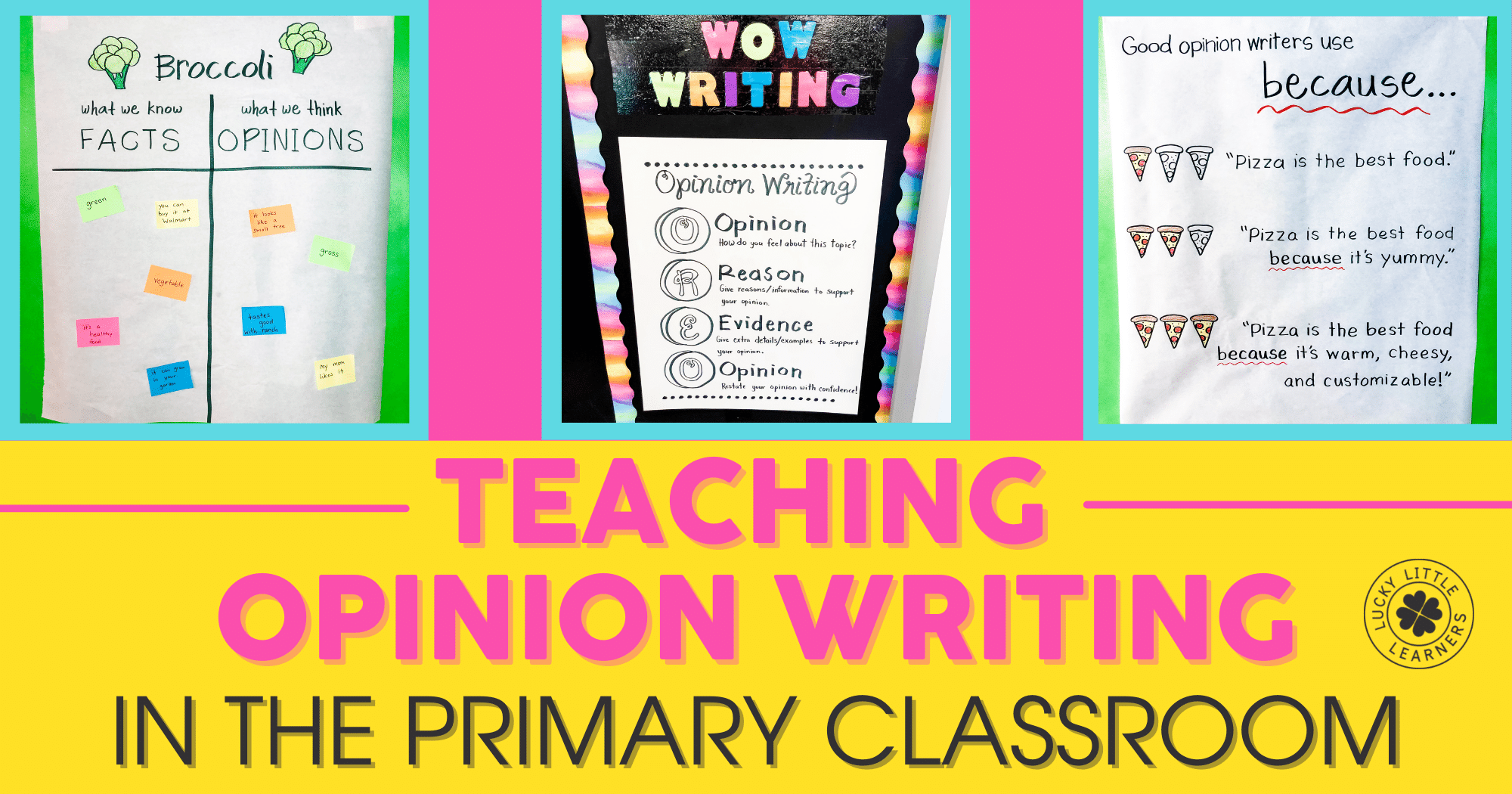As teachers, we know that our little learners have A LOT of opinions. Getting those opinions on paper and properly supported can be the tricky part. If you are entering your opinion writing unit or looking for some ways to change things up, you’re in the right place! First, let’s make sure we’re all on the same page (writing pun intended) on expectations for our students.

Take the guesswork out of teaching opinion writing—get ALL the tools you and your students will need to be successful in one unit.

What Is Opinion Writing?
The exact specifics of what your students need to produce to be considered proficient in opinion writing can change based on the curriculum your students use. To keep things simple this is the definition from the Common Core State Standards Initiative that can be used as a baseline.
Using that base definition here are the components we’re looking for in student writing:

Step 1: Introducing Opinion Writing
First things first, let’s make sure all of your students know what an opinion is. Our students live in a digital landscape where the ability to discern between fact and opinion becomes increasingly important as they get older. So starting this writing unit with activities that help them build those skills is great! The Lucky to Learn Writing Opinion Unit lays out everything in a scope & sequence and sequential lesson plans.
Fact Vs. Opinion Sorting
Sorting facts and opinions is something I always do whole group, to begin with. There are so many fun ways to work on this skill as a group. One quick and engaging activity I like to do is create a fun anchor chart with my students. Start by putting a photo of something like broccoli on the board and ask them to write one thing they know about broccoli on a post-it note and stick it to the board. Normally students will write things like it’s green, it’s delicious, it’s gross, it’s healthy, it’s a vegetable. Once they all stick their notes on the board we discuss the meaning of fact and opinion and begin sorting our collective knowledge into columns. This facilitates a really nice conversation about the word “know” and how we need to be conscious of whether a piece of information is a fact or an opinion.
Once your students have a base understanding of the difference between fact and opinion try a small group or individual sorting activities.

Step 2: Stating an Opinion
Now that your students know the difference between fact and opinion it’s time to get started on stating their own opinions! An engaging way to get students to state their opinion is with toys! Lay out a collection of readily available toys, and after testing each toy, students will write an opinion piece on the best toy.

Step 3: Supporting an Opinion
Alright, your students have the basics mastered. They know what an opinion is and they can state it clearly. Now, it’s time to support those opinions. Lucky to Learn Writing guides students step by step through the opinion writing process, with three separate organizers to help them develop each supporting reason separately.

Step 4: Writing An Opinion Piece
Once your students have learned what an opinion is, have learned to state and support their opinions, it is time for an official opinion writing piece. Make the publishing phase even more official by having students illustrate a cover.

We’ve Got Your Opinion Unit Planned Out!
Help your students build confidence in opinion writing with this easy-to-use unit!
- Step-by-step lessons
- graphic organizers
- sentence starters
- fun prompts to guide them in stating opinions, giving reasons, and supporting ideas.






0 Comments